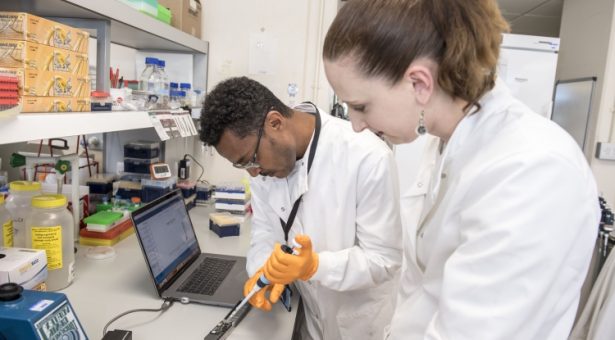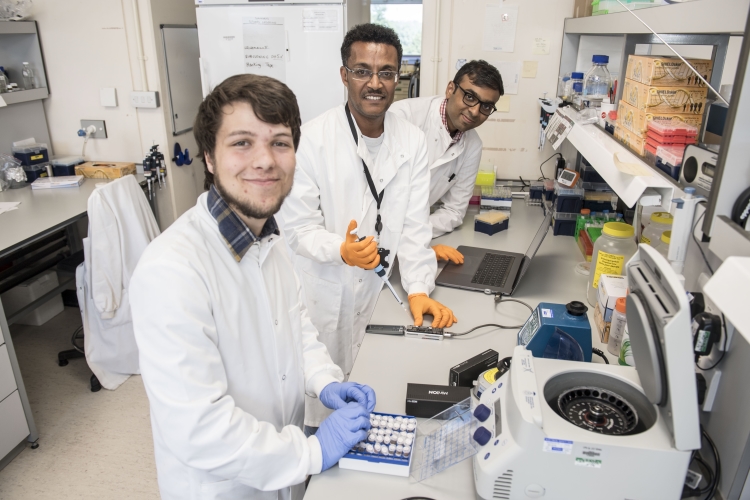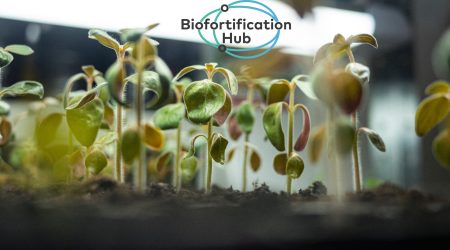Nanopore sequencing for plant disease diagnostics in Ethiopia

Based at the Ethiopian Institute of Agricultural Research, Abel is a plant-tech researcher, who has spent six months in my lab working on wheat rust, which is a major disease of wheat worldwide and also affects Ethiopian wheat crops.
Having joined my team in March, Abel is being trained in a new innovative approach for fungal crop pathogen diagnostics we have developed, using the MinION nanopore mobile genome sequencer platform.
This new strategy has the potential to revolutionise plant disease diagnostics and will likely have far-reaching implications for how new plant health threats are identified and tracked into the future.
The project uses a handheld MinION nanopore sequencer, built by Oxford Nanopore, to analyse samples in the field; reading the pieces of the genome which define the different strains of the wheat rust pathogen. This then provides real-time information about the exact strains present in farmers’ fields.
In contrast, current diagnostics for wheat rust are slow (typically taking months between collecting the sample and final strain identification), costly and limited to a small number of samples analysed by highly specialised labs.
The new mobile genotyping approach enables the identification of individual strains of the pathogen rapidly in situ, without the need for high-tech facilities.
The data generated will allow our team to better understand how each strain of the pathogen spreads in Ethiopia within crop seasons. Additionally, the data can also be collated to assist with improving disease forecasting models.
With speed being of the essence, the MinION sequencer is ideal because it can process a single sample in just a few hours.
This is the first collaboration of its kind looking at wheat rust in Ethiopia.
Initially our work will focus on yellow rust, but the hope is to expand it to other important crop diseases.
We are working closely on this project with Dr David Hodson from the International Maize and Wheat Improvement Centre (CIMMYT) and are supported by funding from the BBSRC and the CGIAR Inspire Challenge.
The collaboration between ourselves CIMMYT and EIAR won’t stop with the nanopore sequencing project.
During Abel’s six month spell in my lab, he has developed knowledge and skills in cutting-edge sequencing technologies, molecular biology and bioinformatic techniques, which will allow him to transfer those key skills to his colleagues in Ethiopia, helping with capacity-building in the region.
We have previously achieved similar success in capacity building elsewhere in Africa, including various training events, a joint PhD studentship with collaborators in South Africa and hosting Dr Rose Kigathi from the Department of Biological Sciences, Pwani University, Kenya, for a nine-month placement as part of her AWARD (African Women in Agricultural Research and Development) fellowship.
We look forward to continuing to support our African colleagues through training in areas of need and further collaborative projects into the future.




